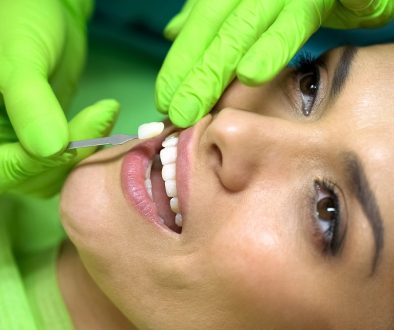A Complete Guide of Dental Cleaning
Regular dental cleanings are crucial for maintaining good health and well-being. These cleanings help prevent severe dental problems such as gum disease and cavities, which can result in tooth loss.
Understanding the significance of dental cleanings is essential for maintaining excellent oral health. This comprehensive guide covers everything you need to know about dental cleanings.
What Is a Dental Cleaning?
Similar to how an annual physical is crucial for overall body health, a regular dental cleaning is essential for maintaining a healthy smile. Its primary objective is to remove plaque and tartar build-up on and below the gum line, which reduces the likelihood of cavities, gum disease, and tooth loss. It also provides your dentist and dental hygienist with an opportunity to identify any signs of tooth decay, oral cancer, or other oral health problems.
A routine dental cleaning involves removing soft and hard deposits (plaque and calculus) above, around, and just below the gum line by scaling. This non-surgical, routine procedure’s duration can vary, depending on the state of your teeth and gums when you arrive. A dental cleaning typically takes a little under an hour. However, the appointment’s length may depend on factors like how much scaling is necessary.
The process involves both a dental hygienist and a dentist. A dental hygienist will collect the necessary assessments and notify the dentist when this is complete. We are looking for anything abnormal that would need treatment or referral to a specialist. Your dentist will then inspect your teeth, existing restorations, and gums and examine the hygienist’s findings.
How frequently you should receive dental cleanings depends on your specific circumstances, and your dentist will determine the most suitable frequency for you. Although dentists commonly recommend twice-a-year cleanings for optimal oral health, a shorter interval of every three to four months may be necessary if you have signs of gum disease.
What Happens During a Dental Cleaning?
A dental cleaning is more than just removing plaque from teeth. The process begins with a thorough examination of the mouth, face, and neck area, which includes taking vitals, collecting health history, and performing an oral cancer screening. X-rays may also be taken to identify any abnormalities that require treatment or specialist referral.
Once the assessments are complete, a diagnosis is made, and a treatment plan is created based on your specific needs. During the cleaning, both soft and hard deposits, like plaque and calculus, are removed from teeth using a process called scaling. This can be done manually or with power-driven scalers. Polishing with an abrasive paste is then used to remove the remaining plaque and stains. Finally, flossing and fluoride treatment are done to help keep teeth strong and prevent cavities. The frequency of X-rays and dental cleanings will depend on factors like age, oral health, and disease risk.
What to Expect After a Dental Cleaning?
After a dental cleaning, you may experience some unusual sensations in your mouth, depending on the extent of scaling and the instruments used during the procedure. However, you should notice a smooth, plaque-free sensation when you run your tongue over your teeth.
Your dental hygienist can provide valuable advice on what steps to take following your dental cleaning. They may offer guidance on proper brushing and flossing techniques, as well as recommendations for a healthy diet and quitting smoking, both of which can impact your oral health.
You may find it helpful to ask your dental hygienist how long you should wait before eating or drinking after your cleaning, as well as what sensations you should expect in your mouth and when you should schedule your next routine cleaning or specialist appointment, if necessary.
Health Benefits of a Dental Cleaning
Attending routine dental cleanings can provide you with three significant health benefits:
- maintenance of oral health,
- prevention of oral diseases, and
- early detection of oral diseases and infections
Neglecting to attend these cleanings puts you at risk for various oral diseases, including cavities and gum disease, as well as a strong link between oral health and systemic health, such as periodontal disease associated with conditions like heart disease and diabetes. Routine examinations during dental cleanings can help detect oral cancers early, increasing the chances of successful treatment. Lastly, attending regular dental cleanings can also lead to a brighter smile, providing a cosmetic benefit as well.
A failure to get routine dental cleanings can lead to oral diseases and other health issues, which makes attending these appointments crucial for maintaining optimal oral and systemic health.
Routine Dental Cleaning vs. Deep Dental Cleaning
Dental professionals provide both routine and deep dental cleanings to meet the specific needs of their patients. Here’s how they differ:
Routine Dental Cleaning
During a routine dental cleaning, soft (plaque) and hard (calculus or tartar) deposits are removed from your teeth, as well as above and around your gumline by scaling. Although you may feel some sensitivity afterwards, a local anaesthetic is typically unnecessary.
Deep Dental Cleaning
A deep dental cleaning is more comprehensive, time-consuming, and expensive, depending on the severity of the patient’s condition. It is considered an effective treatment for gum disease before it progresses. Local anaesthesia is often used to alleviate pain during the procedure.
A deep dental cleaning, also known as scaling and root planing or periodontal debridement, involves cleaning deeper areas along the roots of the teeth. The space between gums and teeth becomes deeper below the gumline when bacterial infection causes tissue and bone deterioration that supports the teeth. This is known as periodontal disease. If left untreated by deep dental cleaning or surgery, it can lead to tooth loss.
Patients may be surprised if their dental professional recommends a deep dental cleaning, especially if they haven’t experienced any painful symptoms of gum disease. Most people may not be aware of the infection. This is why routine examinations are so important.



